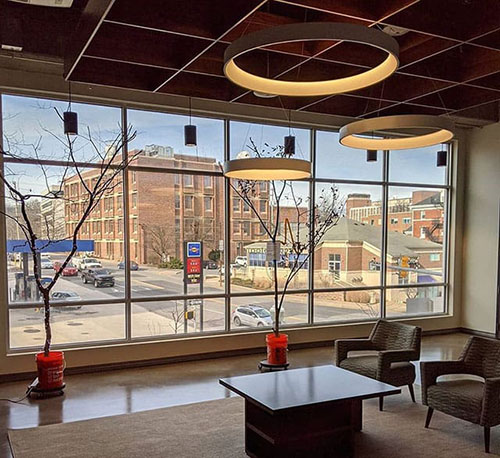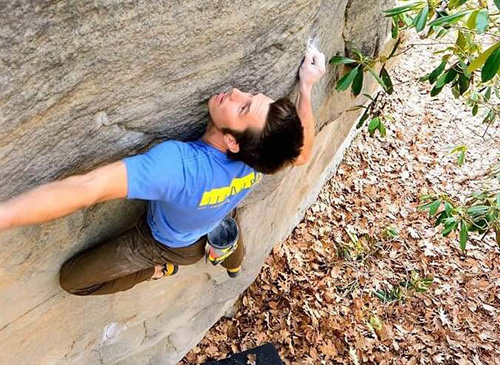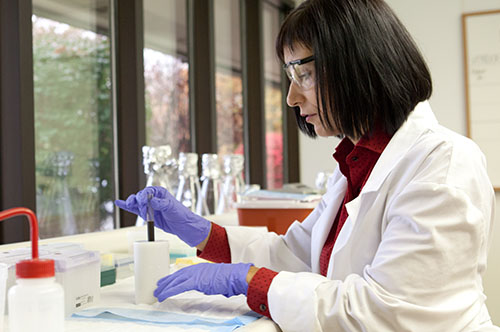
Sustainability and energy efficiency are critical issues in today’s world. Penn State associate professor of engineering science and mechanics, Saptarshi Das, is working toward solutions using unique algorithms and 2D technology.
Das began his professional career at Argonne National Laboratory in the suburbs of Chicago after earning his PhD from Purdue University. He remained there doing his postdoctoral research and moving into an assistant research scientist position where he focused his research primarily on 2D materials-based flexible electronic devices.
He credits his time there with providing him a platform to pursue his own research ideas and start working on independent research, all in preparation for eventually moving into a faculty position. It was an ideal mid-stage between his experience being a student and mentoring students. Then, when he had an opportunity to join the faculty at Penn State, no other offers held a candle.
“In my research area, Penn State is one of the leading institutions in the nation. We have a very robust, vibrant program – our Materials Research Institute ranks in the top 10. Getting an opportunity to be a part of that is a privilege and coming to Penn State was complementary to what I want to do. There were also many good researchers, scientists and faculty members doing cutting edge research in materials science, which was a major draw,” he says.
We sat down with Das to learn more about his research, its promise for the future and his goals and aspirations.
HappyValley Industry: Part of your work aims to solve large-scale problems known as combinatorial optimization problems. Can you explain what these issues are and why they matter?
Das: This is a general class of problems that are important for many applications. Take for example airline scheduling and routing. How can airlines determine the schedule for so many planes leaving so many airports, while at the same time making sure they have enough passengers to avoid losses? Given the number of routes that exist in the airline and the number of different areas available, finding the best possible route becomes increasingly difficult.
“You would be amazed by how certain animals can solve difficult computational problems in a most simplistic manner. They don’t have supercomputers in their brains, and yet they can solve these problems using some very interesting algorithms.”
Combinatorial problems don’t only affect airlines. They also impact the supply chain industry. Shipping is a prime example. When you ship a package, FedEx has to decide what the best route between destination A and destination B is because there are a thousand different ways of routing that package. Therefore, these companies want to make sure the route they choose is most cost-effective so they can make profits and their customers don’t overpay.
These are typical combinatorial problems because there are multiple options available and you need to find the option that’s the best one. Think about what it would be like to plan a trip and you want to visit multiple cities. You need to plan what city to visit first, which one should be next and which should be last. There are many factors that will go into your decision, like airfare, car rentals, mileage. There are multiple different solutions, which makes this problem combinatorial. And as the number of cities increases, the complexity of the problem does too.
HappyValley Industry: What inspired you to start applying algorithms to solve these problems?
Das: Solving combinatorial problems requires huge computational power — think supercomputers. That’s what airline industries, shipping companies and Amazon all use. That takes a lot of energy. Whenever we try to solve a problem with a computer, we don’t notice it, but it actually takes a lot of energy. When the problem becomes humongous, the energy consumption also becomes humongous. Given that we have so many options today and it’s simply going to keep increasing, we need to find ways to solve these problems in easier, more energy-efficient ways. That’s what we are trying to do with these new types of devices and materials that we’re developing and building at Penn State.
“I am hopeful that it transitions into technology and makes the future of mankind better, safer and more convenient.”
When you solve any type of computational problem, you need to use algorithms. There are many available and we have picked a particular one that was inspired by how the natural world works. Our group has the tendency to look to the natural world and how the animals behave in order to solve problems. You would be amazed by how certain animals can solve difficult computational problems in a most simplistic manner. They don’t have supercomputers in their brains, and yet they can solve these problems using some very interesting algorithms. We chose those particular algorithms because we know that they use very limited resources to solve those problems.
HappyValley Industry: One of the keys to being able to effectively use algorithms to solve problems in a smart, energy-efficient way for organizations of all sorts is to overcome what’s called a von Neumann bottleneck. Can you describe what this is?
Das: This is an obstacle for whatever we’re doing right now. When we use a computer, we have a central processing unit that does all of the addition, subtraction and multiplication – all of which takes place in the core processing unit of the computer. But in order to do the operation, you need data. When you’re adding two numbers, you need two numbers in the first place to even do the addition. These numbers are stored in memory.
In computers, the CPU and the memory are completely separate. Every time you want to do an operation, you need to get information out of the memory, perform your operation and put it back into the memory. Even 20 years back, the amount of data we were working with wasn’t huge. But today, the amount of data is in zettabytes that’s created every time. It’s enormous. So we have this enormous amount of data and now we want to process it. The problem isn’t in the data storage or in the computation but in the transition of data from one place to the other.
“If we can derive inspiration from nature and design our sensors accordingly, we might be able to build a better future for generations to come. That is essentially the main goal and objective of my research group.”
That is something that needs to be overcome to make things more energy efficient. This is exactly what we try to do by bringing the logic and memory right next to each other, which is precisely how our brain activity works. In our brains, neurons are the computational tool and the neurons connect with other neurons through synapses. Those synapses store the information. And they’re right next to each other, which is what we try to mimic in our devices.
HappyValley Industry: How did you discover 2D materials are so promising for the future?
Das: I started working on 2D materials back in 2012. At that point, silicon was the primary material used in technology. But in my PhD research, we were already seeing the stagnation in silicon technology. In 2012, a group in the UK essentially reinvented 2D materials. As a device engineer, it piqued my interest. I started working on it and immediately saw that it held a lot of promise. The government started putting a lot of funding in it and that’s how it all really started. It’s matured quite a bit and many signs point to the industry beginning to adopt it as well.
“You need not only the ideas, but also the nurturing of the ideas. That happens here in Happy Valley, both in terms of support from the university and from the community. I consider myself privileged to be a part of it all.”
This is very much how things happen. In research, things don’t always work out the way you envision they will. Research is always risky. Sometimes you work on something you think will succeed and it devolves. Sometimes it evolves and succeeds. It’s almost like natural evolution. But at this point, 2D seems to be evolving in the right direction.
I am hopeful that it transitions into technology and makes the future of mankind better, safer and more convenient.
HappyValley Industry: What are your goals for the future of your research?
Das: Our primary goal is to develop nature-inspired sensors or bio-inspired sensors, which could be extremely energy efficient. One of the grand challenges of the 21st century is, how can we make things more sustainable? How can we make whatever we use more energy-efficient? It’s very important for many generations to come. It’s our responsibility to make sure that we give them a sustainable future.
Nature itself has sustained for billions of years. There have been so many tiny and larger species, which are essentially all natural sensors. If you think about animals, they survive. And in order to do that, they have to use their sensory skills, yet they use hardly any energy compared to the human species.
If we can derive inspiration from nature and design our sensors accordingly, we might be able to build a better future for generations to come. That is essentially the main goal and objective of my research group.
In closing, Das adds, “Being in academia, I have a unique opportunity to interact with many talented individuals. I think that is very important for success in research. This not only involves my faculty colleagues, but also students. A lot of times, the students are the ones doing the day-to-day hard work and getting things done.”
“The fact that Penn State is home to so many wonderful individuals and students makes our research successful. State College is such a wonderful place, which really contributes to our success. You need not only the ideas, but also the nurturing of the ideas. That happens here in Happy Valley, both in terms of support from the university and from the community. I consider myself privileged to be a part of it all.”




Comments
Powered by WP LinkPress